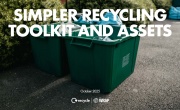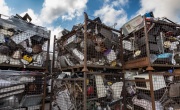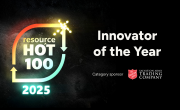Ongoing volatility for recycled glass
Tim Gent, Director of Recresco, on the impact of the pandemic and incoming regulatory changes on today's glass market.
The last two years have been a rollercoaster ride for the UK glass industry with uncertainty around supply and demand of material and PRN prices reaching record levels towards the end of 2021. PRN prices naturally fluctuate alongside supply and demand with surplus supply material resulting in lower prices and a perceived shortfall of supply against increased demand causing prices to rise.
 2020 saw an exceptional volume of glass following lockdown, which sparked a change in consumer drinking habits that led to an almost overwhelming amount of glass moving through reprocessors. The excess glass from kerbside collections made clear just how much we were drinking at home while hospitality venues stayed closed. As obligation is based on the previous year, this sharp rise in tonnage resulted in increased annual recycling responsibility for 2021.
2020 saw an exceptional volume of glass following lockdown, which sparked a change in consumer drinking habits that led to an almost overwhelming amount of glass moving through reprocessors. The excess glass from kerbside collections made clear just how much we were drinking at home while hospitality venues stayed closed. As obligation is based on the previous year, this sharp rise in tonnage resulted in increased annual recycling responsibility for 2021.
When Defra announced the increase in glass recycling targets to 81 per cent for 2021 and 82 per cent for 2022 with a 72 per cent target of remelt over aggregate, the glass industry welcomed the news with confidence and commitment. Unfortunately, however, glass struggled throughout the year to meet this increased obligation. Despite more than 80,000 tonnes of carryover from December 2020 and the reopening of hospitality in the summer which should have helped to level things out, packaging data published by the Environment Agency for the third quarter of 2021 showed glass remelt was falling short of its target and glass remelt PRN prices surged, reaching £190 per tonne in December – up from £9.75 per tonne in December 2020.
It is certainly an interesting time for the industry. With glass trailing behind throughout 2021, meeting obligation was expected to be challenging. However, glass remelt and glass other met 2021 targets albeit with reduced carryover. There is, though, still a general feeling of market uncertainty which makes the outlook for the year ahead unclear. The effects of the pandemic continue to impact the hospitality sector and rising energy costs are also clearly a concern for UK glass manufacturing and supply chain.
The industry is also preparing itself for total reform of the Resources Waste strategy although progress on this is proving slow. The UK Government and the Devolved Administrations made their intention to introduce Extended Producer Responsibility (EPR) for packaging clear with a planned phased introduction of the scheme from 2023. However, ongoing issues have meant the start date has now been delayed indefinitely. The existing PRN system was expected to come to an end but with no confirmed introduction date in place for EPR, it now looks like the current PRN system will instead continue with adjustments so that it can support EPR in the longer term.
 This article was taken from Issue 102
This article was taken from Issue 102EPR forms one part of four focus areas of the reform including Deposit Return Scheme (DRS), Plastic Tax and consistent waste collections. EPR applies the ‘polluter pays’ principle by placing 100 per cent of the net cost for disposing and recycling of materials on those businesses that bring packaging to the market. The goal is to reduce excess waste while promoting better consideration of the recyclability and sustainability of packaging at the design phase. It is hoped the new system will address long standing issues and create a more effective waste management strategy in the UK overall. For glass, being a highly sustainable and infinitely recyclable material, this could be a positive move and should drive more recycling of glass and a drive for glass packaging.
As we look ahead, it is important that any reform of the current system is designed to encourage more and better recycling, creating a system that promotes sustainability and circularity. Investment in enhanced recycling facilities and systems that ensure more glass is driven into remelt over aggregate is crucial.
For now, the rising PRN prices we saw toward the end of last year promoted increased recycling rates, which is exactly what the system is designed to do. High prices were predicted to continue well into the start of 2022 but the year has actually started with a collapsing glass remelt PRN market. The reasons for this are still unclear but rumours around compliance issues and defaults are rife so the next few months will be interesting as the truth unfolds. 






